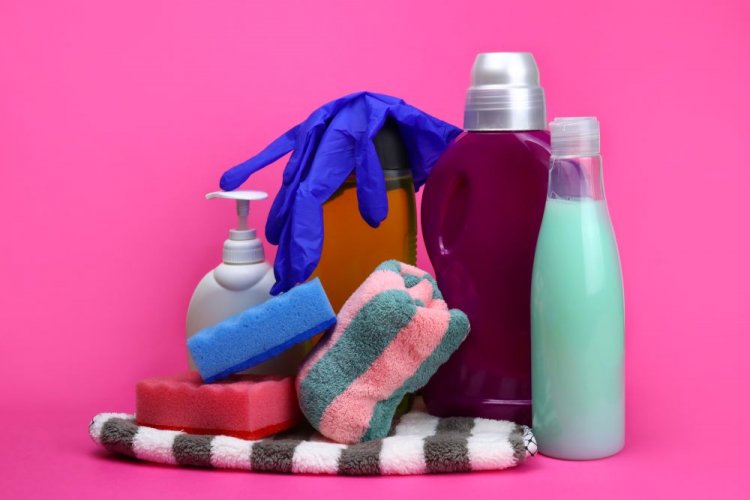

4 advantages (and 1 disadvantage) of desiccant dehumidifiers
Feb 20, 2025High humidity can be unpleasant. If you're choosing a dehumidifier, this brief overview of the advantages and disadvantages...
The quality of the air we breathe every day has a major impact on our health and well-being. One important factor affecting this quality is the level of carbon dioxide, known as CO2, indoors. Although CO2 is a natural part of the atmosphere and essential for life on Earth, excessive accumulation of it indoors can have a negative impact on our health, well-being and productivity. In this article, we will look at the harmfulness of CO2 indoors and the importance of measuring it to maintain a healthy environment. We will explore the most common sources of indoor CO2, measures to reduce its accumulation, the relationship between CO2 levels and ventilation, and the effects of long-term exposure on human health. Understanding these aspects is key to improving the air quality in our homes, workplaces and public buildings where each of us moves every day.
The quality of the air we breathe every day has a major impact on our health and well-being. One important factor affecting this quality is the level of carbon dioxide, known as CO2, indoors. Although CO2 is a natural part of the atmosphere and essential for life on Earth, excessive accumulation of it indoors can have a negative impact on our health, well-being and productivity. In this article, we will look at the harmfulness of CO2 indoors and the importance of measuring it to maintain a healthy environment. We will explore the most common sources of indoor CO2, measures to reduce its accumulation, the relationship between CO2 levels and ventilation, and the effects of long-term exposure on human health. Understanding these aspects is key to improving the air quality in our homes, workplaces and public buildings where each of us moves every day.
CO2 is not an inherently toxic gas, but its accumulation in enclosed spaces can indicate inadequate ventilation. When people exhale, they produce CO2, and if there is not enough ventilation, the CO2 level in the room increases. This condition, especially if it persists for a long time, can cause a range of unpleasant symptoms, including headaches or respiratory problems. These side effects can occur gradually and affect the quality of life and overall health of individuals.
Scientific studies suggest that higher levels of CO2 can have a negative impact on cognitive function and productivity. This phenomenon is particularly worrying in work and educational environments where people are more concentrated. Reduced concentration and drowsiness caused by excessive CO2 can lead to reduced work and learning efficiency.

Excessive indoor CO2 accumulation is also often associated with poor air quality. This problem is particularly severe in buildings with inadequate ventilation, such as offices, schools and shops. Elevated levels of CO2 can also be an indicator of other harmful substances in the air, such as VOCs (volatile organic compounds) or viruses and bacteria that can cause respiratory diseases and allergies.
Understanding the main sources of CO2 is key to understanding how to minimise its build-up and maintain a healthy environment for all occupants. The most common sources of carbon dioxide indoors are:

Fortunately, there are simple and effective ways to reduce the production of CO2 in our homes and work spaces, thereby significantly improving indoor air quality:

Thermometer and hygrometer Airbi CONTROL
CO2 meters allow you to easily and inexpensively measure CO2 levels in specific parts of a building. Most CO2 meters are accurate enough to show whether ventilation in homes, offices and schools is sufficient.
There are several methods of measuring CO2, each with its own advantages and limitations. When selecting a measurement method, it is important to consider the needs and requirements of the specific environment and select the method that best meets the required parameters of accuracy, reliability and affordability. An ideal price/performance ratio is offered by the Airbi CO2AIR, for example, which is equipped with a highly accurate photoacoustic sensor and measures indoor temperature and relative humidity in addition to graphical and numerical indication of carbon dioxide levels. This provides truly comprehensive information about the air quality in the room. You can buy the Airbi CO2AIR for 1 990 CZK, for example, here.

Airbi CO2AIR measures CO2 concentration, temperature and humidity
CO2 measurement is crucial for early warning of potentially harmful conditions and for taking appropriate measures to improve indoor air quality. Whether you are at home, at work or at school, the correct CO2 level is crucial for your health and well-being. Try to minimize CO2 sources, ensure adequate ventilation and regularly monitor indoor CO2 levels to ensure an optimal environment for you and your loved ones.











































